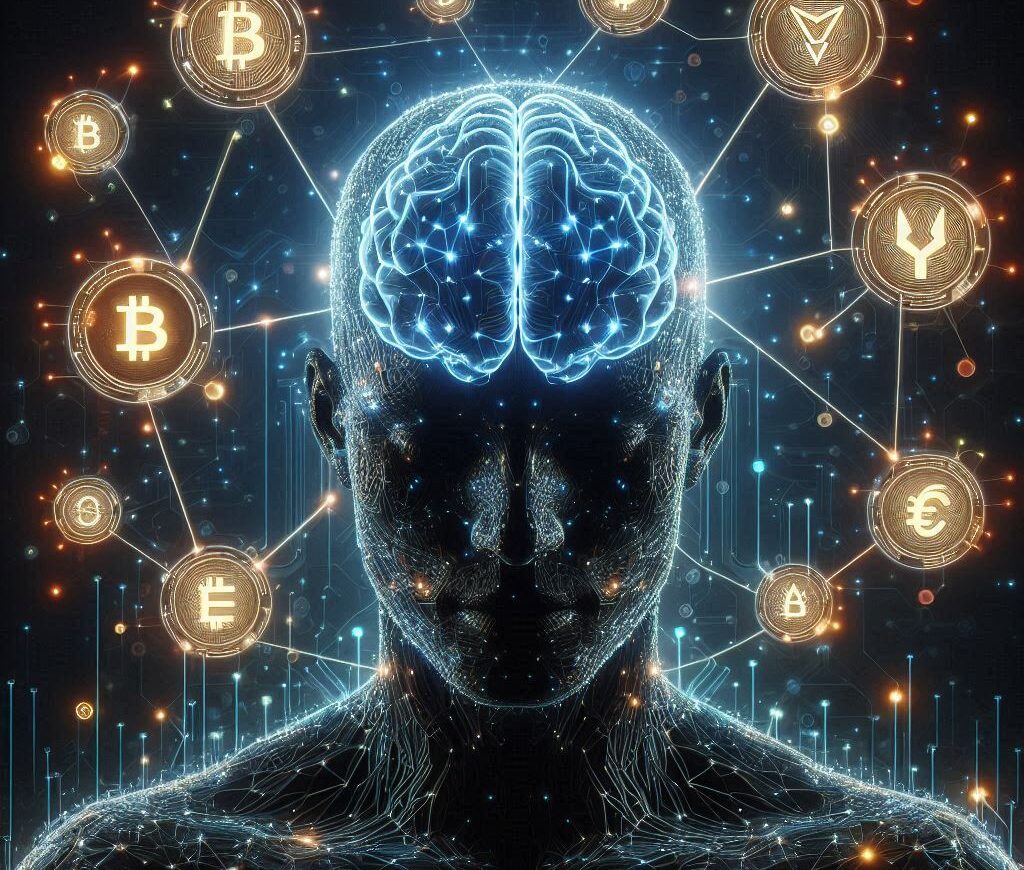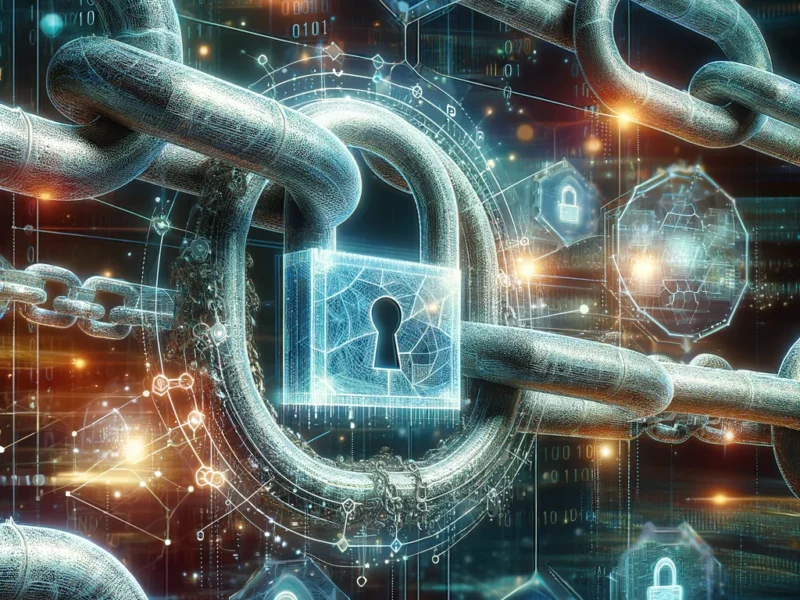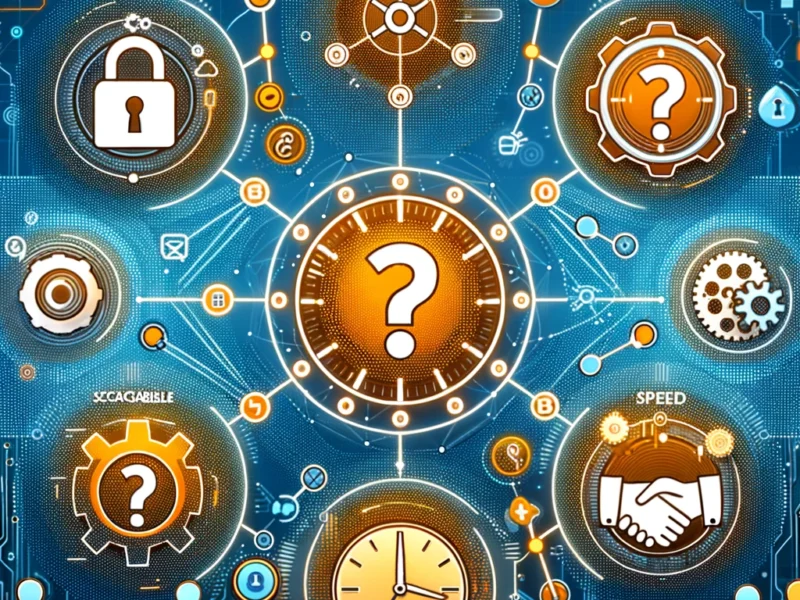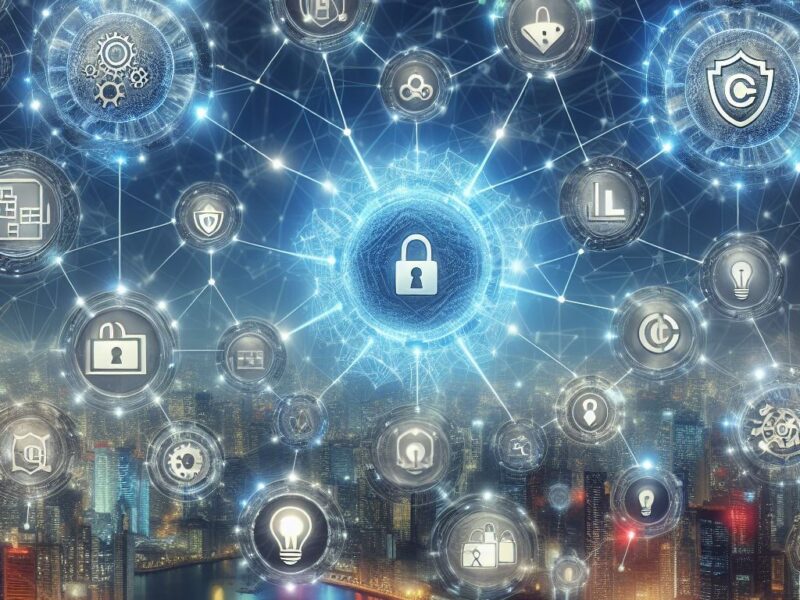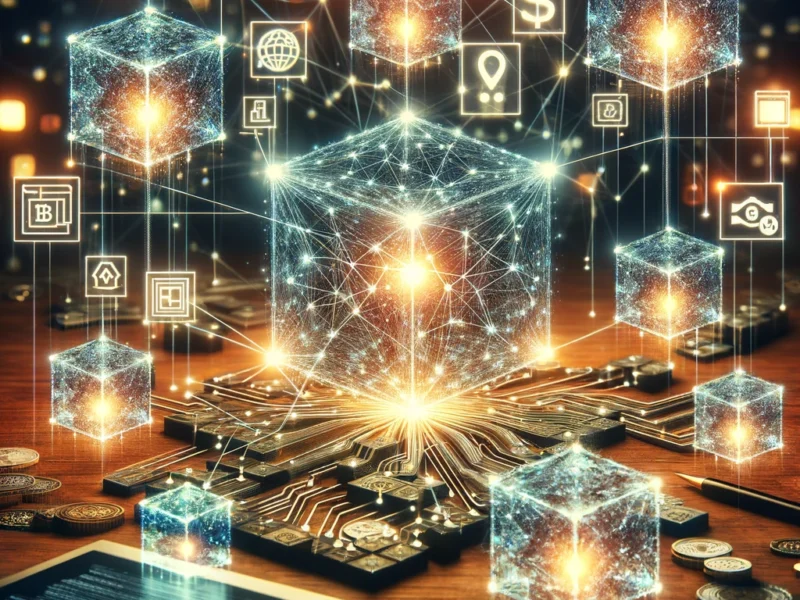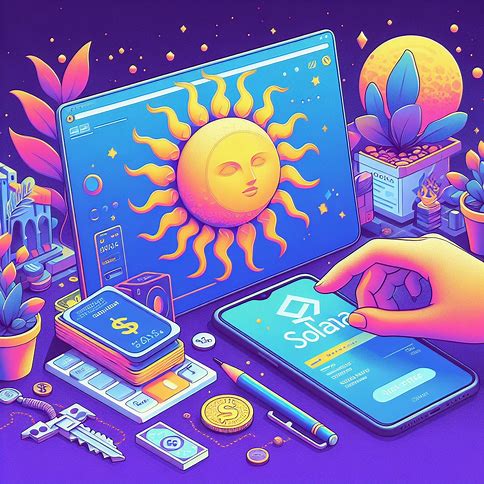Blockchain technology and artificial intelligence (AI) are among the most innovative inventions to emerge in the past ten years. Artificial Intelligence (AI) allows machines to help people and make decisions, while blockchain technology is a distributed ledger that makes applications safe, transparent, and unchangeable.
The convergence of blockchain technology and AI has the potential to completely change a number of industries by improving their overall efficacy, security, and transparency. In this post, we will look at how blockchain and artificial intelligence intersect. We will also explore the potential use cases that arise from their integration.
Jump To
ToggleHow Blockchain Enhances Artificial Intelligence
One of the most promising aspects of the blockchain-AI intersection is how blockchain can enhance and improve AI systems. These include:
1. Decentralized AI
Traditionally, AI models are trained and operated on centralized systems, leading to concerns about data privacy, security, and control. By integrating blockchain into AI systems, we can create decentralized AI networks where data and models are distributed across multiple nodes. This decentralized approach offers several benefits:
- Data Privacy
With blockchain, data can be securely stored and accessed without compromising privacy. Techniques like federated learning allow AI models to be trained on decentralized data without the need for centralized data aggregation.
- Trustless Collaboration
Blockchain enables trustless collaboration among multiple parties in AI development. Smart contracts can be used to govern the sharing of data, models, and rewards, ensuring fair and transparent collaboration.
- Robustness and Resilience
Decentralized AI networks are more resilient to single points of failure. If one node goes offline, the network can continue to function, ensuring the availability and reliability of AI services.
2. Explainable AI
One of the challenges with AI is the lack of transparency and explainability in decision-making processes. AI models often operate as “black boxes,” making it difficult to understand how they arrive at specific conclusions. This opacity can lead to biased or unfair decisions, especially in sensitive domains like healthcare and criminal justice.
Blockchain can help address this challenge by providing a tamper-proof and auditable record of AI decision-making. By logging the inputs, outputs, and intermediate steps of AI models on a blockchain, we can create a transparent and immutable trail of the decision-making process. This explainability enhances trust in AI systems and enables easier detection and correction of biases or errors.
3. Secure Data Sharing
AI thrives on data. The more diverse and comprehensive the data, the better the AI models can learn and make accurate predictions. However, data sharing among different organizations or individuals raises concerns about privacy, security, and ownership.
Blockchain can facilitate secure and controlled data sharing for AI applications. By leveraging blockchain’s cryptographic protocols and smart contracts, data owners can define access rights, usage permissions, and incentive mechanisms for sharing their data. This enables the creation of decentralized data marketplaces where data can be securely shared and monetized, fueling the growth of AI while preserving data sovereignty.
4. Incentivizing AI Development
Blockchain-based token economies can incentivize and reward participants in AI ecosystems. By creating native tokens on a blockchain network, AI developers, data providers, and users can be incentivized to contribute their skills, resources, and data to the ecosystem.
For example, developers can be rewarded with tokens for creating and sharing high-quality AI models, while data providers can earn tokens for contributing valuable datasets. Users can also be incentivized to provide feedback, report bugs, or help improve AI algorithms. This tokenized approach creates a self-sustaining ecosystem that drives innovation and collaboration in AI development.
How Artificial Intelligence Empowers Blockchain
While blockchain enhances AI, the reverse is also true. AI can significantly empower various aspects of blockchain technology. These areas include:
1. Smart Contract Optimization
Smart contracts are self-executing contracts with predefined rules and conditions, enabling automated and trustless transactions on blockchain networks. However, as smart contracts become more complex, their development and auditing become increasingly challenging.
AI can assist in the optimization and verification of smart contracts. Machine learning algorithms can analyze smart contract code, identify potential vulnerabilities or inefficiencies, and suggest optimizations.
AI-powered tools can also automatically generate and test smart contracts, reducing the risk of errors and improving development speed.
2. Consensus Mechanism Improvement
Consensus mechanisms are the backbone of blockchain networks, ensuring that all participants agree on the state of the ledger. However, traditional consensus algorithms like Proof of Work (PoW) and Proof of Stake (PoS) have their limitations in terms of scalability, energy efficiency, and security.
AI can help improve consensus mechanisms by enabling more intelligent and adaptive algorithms. For example, AI-based consensus algorithms can dynamically adjust network parameters based on real-time network conditions, optimizing performance and security.
AI can also help detect and prevent malicious activities, such as double-spending attacks or selfish mining, by analyzing network data and identifying anomalous behavior.
3. Predictive Analytics for Cryptocurrencies
Cryptocurrencies, which are built on blockchain technology, are known for their volatility and unpredictable market behavior. AI-powered predictive analytics can help investors and traders make more informed decisions in the crypto market.
By analyzing large amounts of historical data, market trends, and sentiment analysis, AI algorithms can identify patterns and make predictions about future price movements. Machine learning models can also be trained to detect market anomalies, such as pump-and-dump schemes or insider trading, providing early warning signals to market participants.
4. Blockchain Scalability Solutions
One of the major challenges facing blockchain networks is scalability. As the number of users and transactions grows, blockchain networks can become congested, leading to slower transaction times and higher fees. AI can contribute to solving the scalability problem through various approaches.
For example, AI can help optimize transaction processing and validation by intelligently routing transactions to the most efficient nodes or shards in the network.
AI can also assist in the development of off-chain scaling solutions, such as state channels or sidechains, by predicting optimal channel configurations and automating the management of off-chain transactions.
Key Takeaways
- Blockchain and AI are two transformative technologies that are beginning to intersect, creating new possibilities and synergies.
- Blockchain can enhance AI by enabling decentralized AI networks, improving data privacy, facilitating trustless collaboration, and providing explainable AI through tamper-proof and auditable records.
- Blockchain can also facilitate secure data sharing for AI applications and incentivize AI development through token economies.
- AI can empower blockchain by optimizing smart contracts, improving consensus mechanisms, providing predictive analytics for cryptocurrencies, and contributing to scalability solutions.
- The intersection of blockchain and AI faces challenges related to data privacy and security, regulatory and legal frameworks, interoperability and standardization, and talent and skills gaps.
- Realizing the full potential of the blockchain-AI intersection requires collaboration among technologists, policymakers, and industry stakeholders to create an enabling environment that fosters innovation while prioritizing user privacy and security.
FAQs
1. What is the difference between blockchain and AI?
A: Blockchain is a decentralized, distributed ledger technology that ensures secure, transparent, and immutable transactions without the need for intermediaries. AI, on the other hand, refers to technologies that enable machines to learn, reason, and make decisions, mimicking human intelligence.
2. How can blockchain enhance AI systems?
A: Blockchain can enhance AI systems by enabling decentralized AI networks, improving data privacy through secure storage and access, facilitating trustless collaboration among multiple parties, providing explainable AI through tamper-proof records, and incentivizing AI development through token economies.
3. Can AI help improve blockchain technology?
A: Yes, AI can empower blockchain in various ways. It can optimize smart contracts by identifying vulnerabilities and suggesting improvements, enhance consensus mechanisms through intelligent and adaptive algorithms, provide predictive analytics for cryptocurrencies, and contribute to scalability solutions by optimizing transaction processing and enabling off-chain scaling.
4. What are some potential use cases for the convergence of blockchain and AI?
A: Potential use cases include decentralized AI marketplaces, secure and privacy-preserving data sharing for AI applications, explainable AI systems for transparent decision-making, optimized and verified smart contracts, improved consensus mechanisms, and predictive analytics for cryptocurrency markets.
5. What challenges need to be addressed at the intersection of blockchain and AI?
A: The challenges include ensuring data privacy and security when integrating AI with blockchain, developing clear legal and regulatory frameworks to govern the use of these technologies, achieving interoperability and standardization across different blockchain and AI platforms, and bridging the talent and skills gap in the field.
